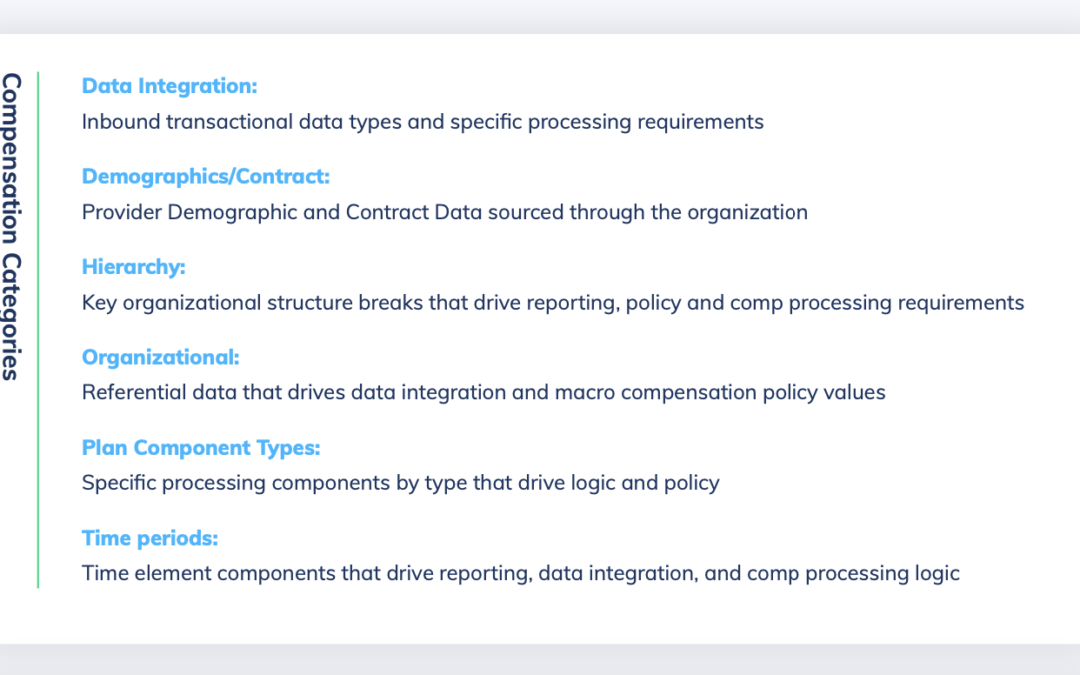The shift to performance-based compensation programs and value-based reimbursement models and measures introduces new complexities that can make compensation management challenging to develop, administer and optimize.
To overcome these challenges, address the transition from volume-to-value-based care, and make informed decisions, organizations must have a transparent view into how clinicians are performing. To gain this visibility, they must have integrated systems that provide timely access to accurate data.
Provider Performance Management (PPM)
With the shift to value-based care, provider performance becomes increasingly important. Effectively managing performance to optimize for ideal behaviors and outcomes is at the heart of a successful health organization.
Provider Performance Management (PPM) is the operationalized processes aimed at improving the efficiency, effectiveness and overall performance of a healthcare organization. PPM leverages automation and centralization to enhance processes and includes incentive compensation management, outcomes management, and advanced analytics.
Provider compensation is the linchpin to all operations, and should be a key consideration for optimization in successful PPM.
Provider Compensation Management (PCM)
Provider Compensation Management (PCM) is a core component of successful Provider Performance Management (PPM). Unfortunately, PCM is a laborious, manual, complex and error-prone undertaking for most health organizations.
Automating PCM empowers organizations with the data points necessary to streamline processes, make more informed decisions and gain a competitive edge.
Automating Your Provider Compensation
Provider compensation automation solutions – or PCM software – is an expanding market, with a number of providers touting their capabilities as effective automation solutions.
PCM software empowers healthcare leaders and administrators with the ability to automate and optimize processes to provide better visibility into data and make more informed decisions.
Ultimately, there are three types of data that provider compensation software can automate including Organizational Data, Referential Data (Reference Data) and Event Data (Transactional Data).
Organizational Data
This is data that pertains to provider demographics and organizational hierarchy within the system (i.e. specialty, groups, providers, etc).
Referential Data
Referential (or reference) data is anything that supports the adjudication and calculation of compensation. This may include RVU rates, thresholds, measurements and targets, exceptions, etc. This may also include cross-reference data such as CPT fee schedules, fair market value benchmarking data, value measure assignments and more.
Event Data
Event data is the transactional data that drives compensation.
Without all three types of data pulled together in a PCM software, organizations will find themselves with an incomplete, inaccurate and ineffective system.
Four Required Components of a PCM Software
In addition to automating these three types of data, a PCM software must have basic functionalities to deliver on the promise of streamlined and automated processes.
With a number of solutions on the market, it’s important to understand the key components of a PCM software to identify if a specific solution is truly a good fit for your organization. To adequately address a healthcare system’s needs, a PCM software must provide these four key components to clients:
Data Management
A base requirement of a PCM software solution is the built-in ability to manage and process inbound and outbound data including organizational data, referential data and event data. Automating the data maintenance is paramount to an effective PCM platform which includes data transformation logic pertaining to inserts, updates, and deletes as well as capturing any data anomalies within user-accessible logs.
Calculation Engine
A PCM software’s calculation engine allows the admin users to configure business rules and compensation logic to automate compensation calculation. At the most basic level, a calculation engine should include configurations to variable elements to address the most common and basic compensation logic,, and any exceptions logic or highly complex models may need to be addressed through custom coding in the system.
More advanced PCM software, like ProCARE, has a proprietary rules-based calculation engine that gives users the full flexibility and control to configure rules to address all business requirements and compensation logic of any complexity including one-off exceptions.
Compensation Outputs
PCM Software should provide compensation outputs to be consumed by downstream systems through an integration process. Two specific categories of compensation outputs include:
- Compensation Statements & Results such as provider scorecards and statements that include detailed reports with visibility into any line item on a statement and the event data that drives those results.
- Operational Reports may include pay files that go back to payroll systems or accrual files that get posted to general ledger accounts. Additionally, these reports may include forecasting and budgeting reports and projections.
Dashboards & Analytics
Another general requirement of a PCM software is the ability to look at each data point at all levels of the organization (specialty, team, position, provider, etc.). Organizations need to be able to look at data from a macro level across the organization AND slice and dice their dashboards by different dimensions such as period, plan, specialty or provider.
ProCARE provides advanced analytics and more accurate budgeting and forecasting capabilities with the modeling functionality. Modeling provides organizations with the ability to interject variable changes in compensation models and generate results that superimpose on current compensation results to project future scenarios.
Automate Then Optimize: The ProCARE Way
While we see many organizations with well-intentioned, sophisticated compensation models, most are limited in their ability to effectively influence desired behaviors and performance.
Automating your existing compensation models, without compromising that complexity and strategy, provides you with the answers you need to determine thresholds, targets, tiers, etc. and optimize value and drive better performance.
Through a fully configurable rules engine, ProCARE users can easily create complex conditional logic to manage all comp business rules across the organizational hierarchy from the enterprise level and across service lines, specialties, groups and down to each individual provider.
ProCARE moves your organization towards a value-based future, enabling you to bridge the gap between strategic goals, payment methodologies, and care pathways and drive alignment across the organization.
Get started today with a quick 15-minute Introductory Call to define your primary compensation management challenges and identify solutions to automate then optimize your processes.










